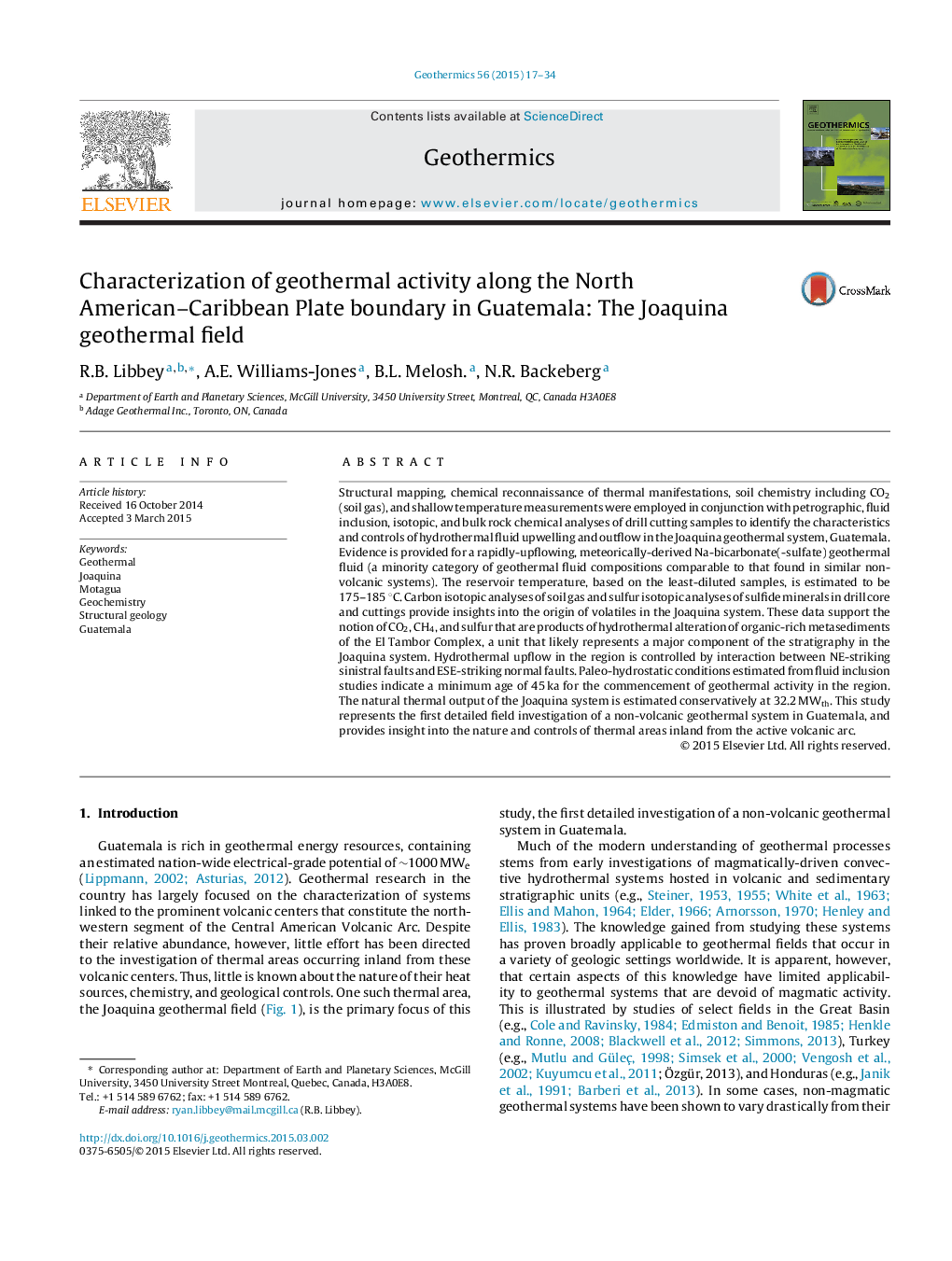| Article ID | Journal | Published Year | Pages | File Type |
|---|---|---|---|---|
| 1742313 | Geothermics | 2015 | 18 Pages |
Abstract
Structural mapping, chemical reconnaissance of thermal manifestations, soil chemistry including CO2 (soil gas), and shallow temperature measurements were employed in conjunction with petrographic, fluid inclusion, isotopic, and bulk rock chemical analyses of drill cutting samples to identify the characteristics and controls of hydrothermal fluid upwelling and outflow in the Joaquina geothermal system, Guatemala. Evidence is provided for a rapidly-upflowing, meteorically-derived Na-bicarbonate(-sulfate) geothermal fluid (a minority category of geothermal fluid compositions comparable to that found in similar non-volcanic systems). The reservoir temperature, based on the least-diluted samples, is estimated to be 175-185 °C. Carbon isotopic analyses of soil gas and sulfur isotopic analyses of sulfide minerals in drill core and cuttings provide insights into the origin of volatiles in the Joaquina system. These data support the notion of CO2, CH4, and sulfur that are products of hydrothermal alteration of organic-rich metasediments of the El Tambor Complex, a unit that likely represents a major component of the stratigraphy in the Joaquina system. Hydrothermal upflow in the region is controlled by interaction between NE-striking sinistral faults and ESE-striking normal faults. Paleo-hydrostatic conditions estimated from fluid inclusion studies indicate a minimum age of 45 ka for the commencement of geothermal activity in the region. The natural thermal output of the Joaquina system is estimated conservatively at 32.2 MWth. This study represents the first detailed field investigation of a non-volcanic geothermal system in Guatemala, and provides insight into the nature and controls of thermal areas inland from the active volcanic arc.
Related Topics
Physical Sciences and Engineering
Earth and Planetary Sciences
Geochemistry and Petrology
Authors
R.B. Libbey, A.E. Williams-Jones, B.L. Melosh., N.R. Backeberg,
